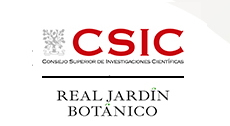Scientific Area
Abstract Detail
Nº613/957 - Temperature shifts dynamically influenced reproductive development and fruit yield of apple (Malus x domestica Borkh.)
Format: ORAL
Authors
Bong M. Salazar1,2, Colin P. Osborne2
Affiliations
1 University of the Philippines Los Baños, Philippines
2 University of Sheffield, United Kingdom
Abstract
Temperature plays a pivotal role in climate change, significantly impacting both natural and agroecosystems. While extensive research has elucidated temperature influence on bud dormancy and flowering in deciduous species, a notable gap exists in understanding its effects on fruit tree yield, particularly apples. Hence, this research aimed to explore the relationship between temperature, reproductive development, and fruit yield in Red Windsor apple trees under controlled environments during the 2020 and 2021 seasons. Specifically, apple trees were subjected to ambient temperatures and fixed deviations (-4C, +2C, or +4C) from these levels for eight months, spanning from budbreak to fruit maturation, with the treatments following the daily and seasonal temperature fluctuations.
Results revealed that phenological shifts induced by temperature treatments altered the growth patterns of reproductive structures, subsequently impacting the developmental overlap between reproductive and vegetative organs. While flowering duration remained unaffected, fruit setting, trunk/branch wood volumes, thermal time requirements, and bud development displayed a magnitude change ranging from 11% to 31% per 1C shift in temperature. Interestingly, manipulating temperatures by 4C from ambient levels did not significantly influence final fruit yield due to source limitations. Significant treatment effects were evident on fruit yield components, with the warmer temperatures prompting an earlier harvest with fewer but larger fruits. Sub-ambient temperatures remarkably enhanced fruit set but resulted in a considerable fruit drop incidence due to low assimilation rates. Moreover, warmer temperatures supported early fruit development by increasing photosynthetic pigment levels and assimilation rates but subsequent stimulation of vegetative growth intensified sink competition at the expense of fruit development.
This research provides crucial insights into the complex physiological dynamics of temperature and their profound implications on apple fruit productivity. Further exploration of these relationships can contribute to the development of practical, resilient, and sustainable strategies to maximise apple yield under shifting climatic conditions.




